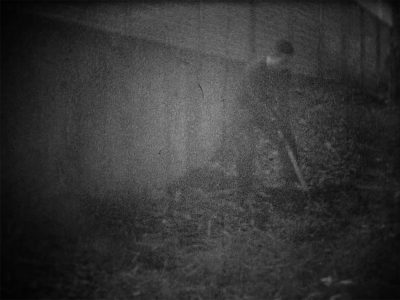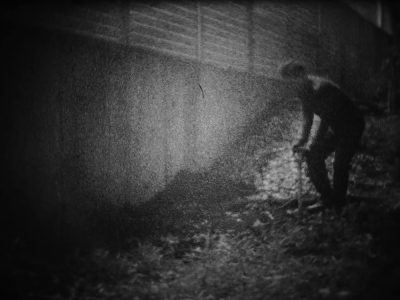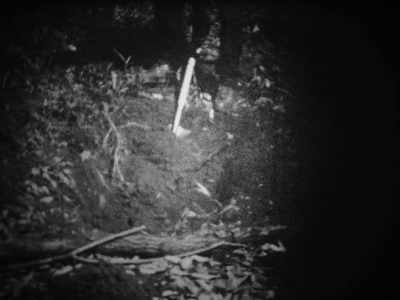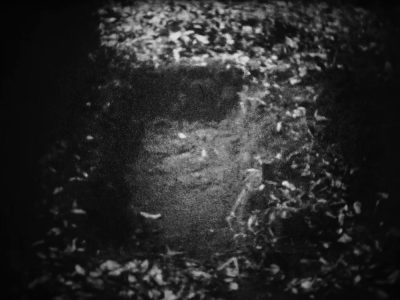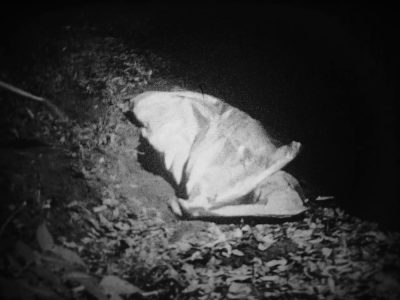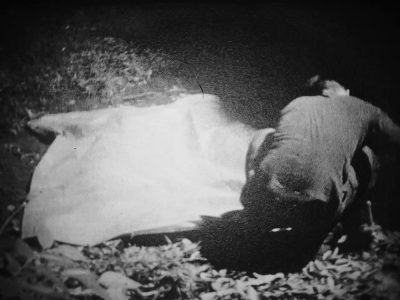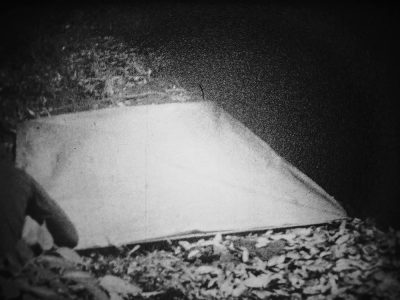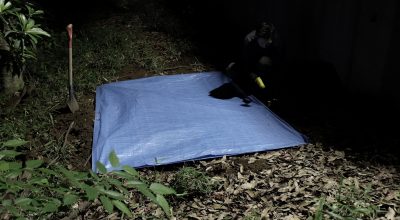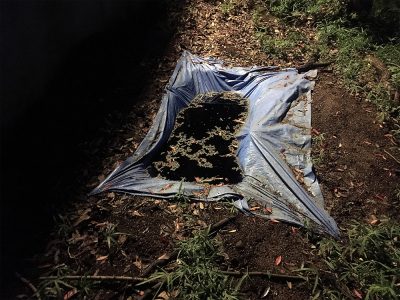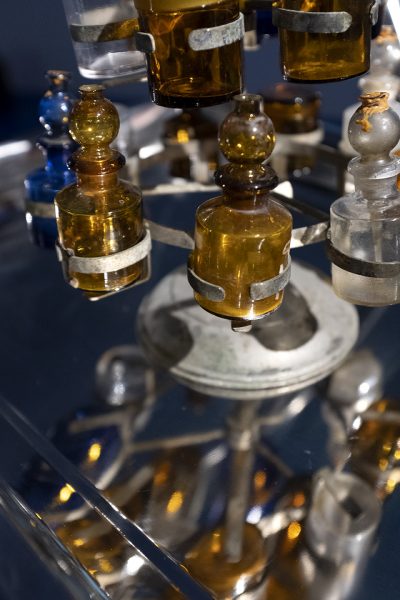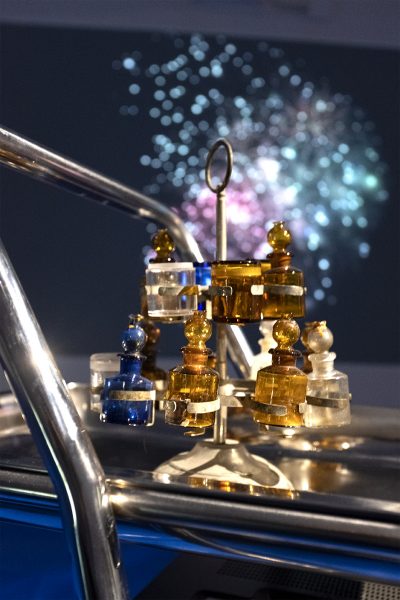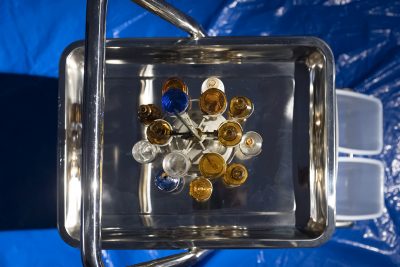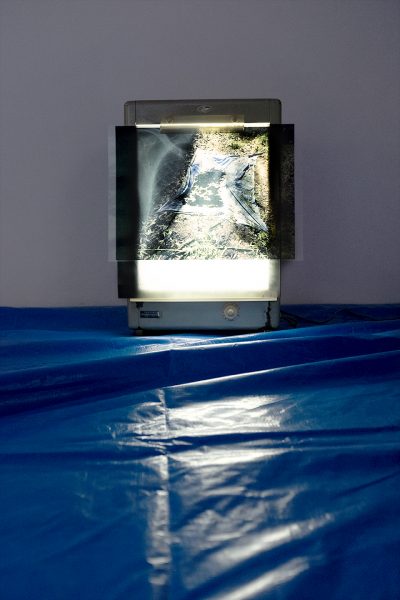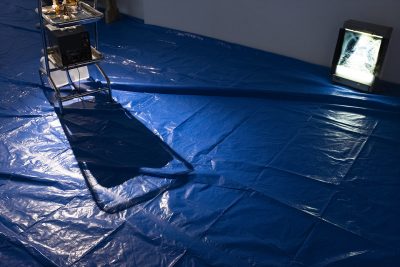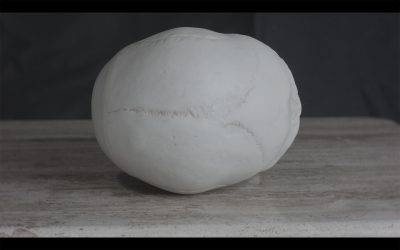Part IV: The Digger (2019)
Video installation
Single-channel video | 4:3 | B&W | 10’30” | Stereo
Transparency film mounted on lightbox, metal rack, glass, CRT TV
This work is a video documentation of a performance made in Toyama Park (戶山公園), Shinjuku, Tokyo.
From the 1920s until the end of the Second World War, Hakone-yama near Shinjuku was the site of the Toyama Army Medical School. Part of its facilities housed the Tokyo division of the Kwantung Army Epidemic Prevention and Water Purification Department.
In the 1990s, more than a hundred human remains were unearthed at Toyama. They were believed to be ‘teaching materials’ of the Medical School. At least sixty-two of the bodies were genetically identified as Mongolian.
The site resonates with my own secondary school experience (Part I: George and the Swimming Pool). I lingered in the park, observing people and the site. Instinct compelled me to dig into the earth—excavating a void just large enough to contain my body, and covering it with a fragment of ‘sea.’ Hours of labour made me sense the intertwining of life, death, and malice, echoing the refugees at the Nanshitou camp who had once been forced to dig their own graves.
According to the son of a worker who carried corpses at the camp, the Japanese warden scattered lime (Ca(OH)₂) over the bodies in a pond, accelerating the dissolution of bones, suppressing bacteria, and masking the stench of decay. I speculate that hydrochloric acid (HCl) may also have been added, producing an exothermic reaction that hastened the decomposition of flesh and bone. The only by-products were salt and water.
This ‘sea’ was composed of bodies and suffering. Over time, fallen leaves and rainwater covered it. Nature pressed its weight down once more, exposing the absence—the void beneath.
